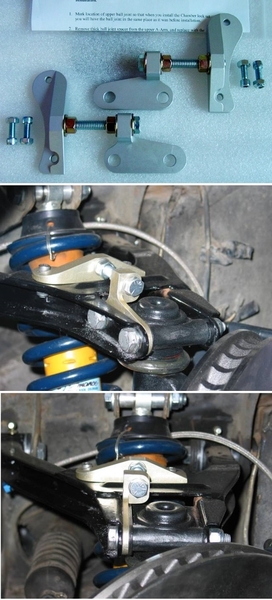Sure have, Jerry. But there's a simpler, cheaper way- by using offset upper front a-arm poly-bushings. Max stock caster is 2.7 degrees and that can be increased to around 4 degrees with such bushings. An additional 1.5 degrees can be added by using the same offset bushings in the lower a-arms (offset the other way), and a further 1 degree can be had by shaving 0.100" from one side of the upper ball joint carrier. This last needs a 0.100" shim added. Neat thing is, it's all reversible with stock parts!
Pat Mical in Mass. at Future Auto splits the stock upper front a-arm in two, straightens the pieces and welds them back together to produce 7 degrees of caster and a custom shim-pack; this really helps stability of the wide-body cars with 10" front wheels at autobahn speeds.
Unless you add power steering, increasing caster above about 4 degrees in a Pantera- especially with wide front tires- will make low speed steering a workout unless you have exceptional upper body musculature. Contemporary 'Vettes ran 7 degrees of caster but they already had power steering as a factory option.
Bump steering shims are simple flat 5/16" strips of aluminum mounted between the rack mounts and the mounting area on the front trunk. The factory supplied these sometime in mid-'73-up. But because the area is at 45 degrees, the rack also moves fwd AND down, which reduces bump-steer but increases Ackermann toe-in. This is subtle and makes little difference to most street owners. But you should know what's happening.
A second method is to use tapered studs in the steering arms and replace the tie-rod ends with 7/16" SAE heim-joints, which screw right onto stock Pantera steering rods. By adding washer-shims to the heim joint thus raising or lowering it, bump-steer is easily changed. Again, both are reversible. A few detailed, illustrated Tech articles in the POCA magazine have been done over the years on both subjects. Zero ill effects have been noted.



